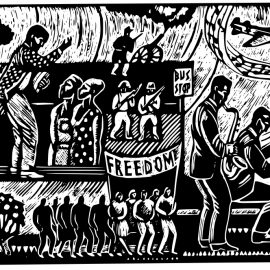

This article is an excerpt from the Shortform summary of "The Case for Christ" by Lee Strobel. Shortform has the world's best summaries of books you should be reading.
Like this article? Sign up for a free trial here .
What is generation loss? How does generation loss affect the information we have about Jesus, and whether or not he was real?
Generation loss is the process of how we lose information over time. In a digital age, there is less chance for generation loss. However, generation loss did contribute to many lost information and documents in the time since Jesus. So what does this mean for the Bible, and the information we have in the gospels?
Keep reading to find out how generation loss may help prove whether or not Jesus was real.
Generation Loss
With the advent of digital reproduction processes, we no longer have to worry about quality or fidelity loss as we copy materials, whether music files, digital images, or word-processing documents. Even modern-day Xerox machines produce near-pristine copies of originals.
When we’re dealing with ancient manuscripts, however, which had to be copied by hand onto fragile materials and transported on foot, the risk of corruption or loss is great.
Nevertheless, there are three interlinked reasons for us to trust that the gospels we have today are faithful to the originals:
- The oldest surviving copies of the gospels were made comparatively soon after the originals were written. Whereas the surviving copies of many ancient texts were made hundreds of years after the original—for example, Tacitus’s Annals of Imperial Rome was written in the second century AD, but our oldest copy dates to 850 AD—there are fragments of the New Testament preserved on papyrus dating to the second century AD. (The earliest copy of the New Testament that survives is a small fragment of the gospel of John dating to between 100 and 150 AD.)
- There is a wealth of early New Testament material. When it comes to ancient texts, the lineage is typically sparse. Take the first-century historian, Josephus: In Greek, his native language, the only copies that exist date to the tenth, eleventh, and twelfth centuries; the earliest version is a fourth-century Latin translation. The New Testament, on the other hand, boasts more than five thousand Greek manuscripts.
- There is consistency among fragments in translation and from diverse geographical areas. In addition to the thousands of Greek fragments, early versions of the New Testament survive in Latin, Syriac, Coptic, Armenian, Gothic, and other ancient languages. And in great numbers: For example, there are between 8,000 and 10,000 Latin Vulgate manuscripts.
According to another esteemed scholar of the New Testament, F.F. Bruce, the New Testament is unparalleled in terms of the textual evidence for its accuracy.
Discrepancies Among the Surviving Copies
There are certainly differences among the many ancient copies of the gospels as a result of generation loss (the highest estimates place the number of differences among the copies at 200,000). But these differences are by and large insignificant. For example, a great many differences occur because two Greek words are transposed (think “goes he” instead of “he goes”). But because Greek is an “inflected” language—that is, each word’s form indicates its part of speech—these kinds of “errors” have no effect on the text’s meaning.
And even more material variations—for example, the fact that the earliest manuscripts of 1 John feature no mention of the Trinity—don’t undermine the key doctrines of the Church. In the case of the Trinity, although the earliest versions of 1 John don’t mention it, other books (2 Corinthians, for instance) do.

———End of Preview———
Like what you just read? Read the rest of the world's best summary of Lee Strobel's "The Case for Christ" at Shortform .
Here's what you'll find in our full The Case for Christ summary :
- How an atheist lawyer-journalist researched Christ and began believing
- The key arguments against the existence of Christ, and why they don't hold up
- How to make up your own mind about whether Christ existed






